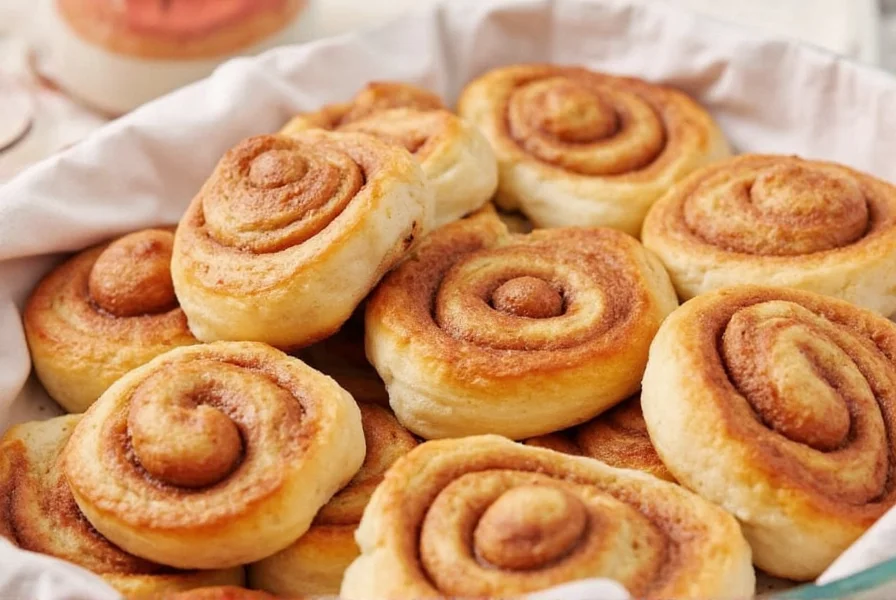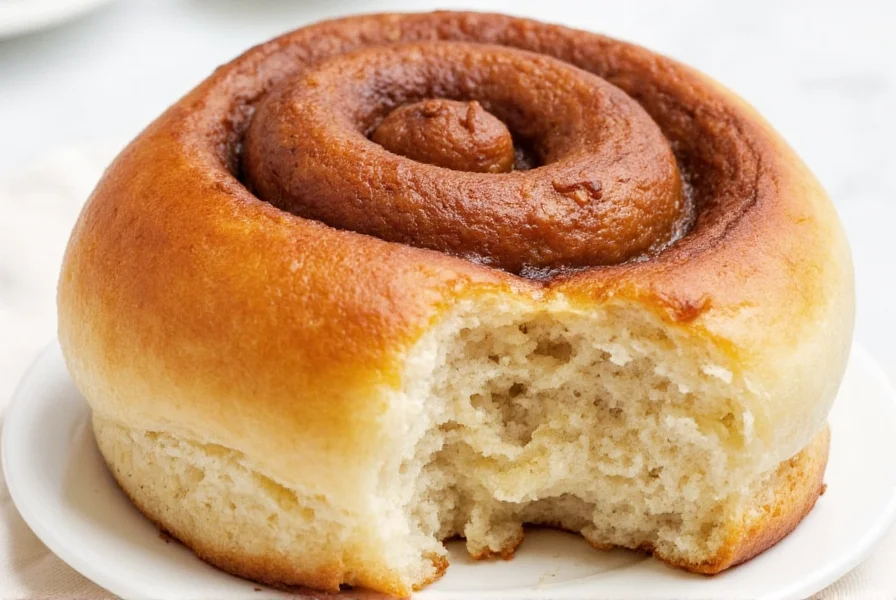Mastering the Art of Cinnamon Roll Perfection
Homemade cinnamon rolls represent the pinnacle of comfort baking, yet many home bakers struggle with inconsistent results. Whether your rolls spread too much, lack definition in the swirls, or develop a soggy bottom, these expert-tested techniques solve common problems while saving valuable preparation time. Understanding the science behind dough hydration, filling consistency, and proper proofing transforms your cinnamon roll experience from hit-or-miss to reliably spectacular.
The Science Behind Successful Cinnamon Rolls
Cinnamon rolls succeed when three elements work in harmony: the dough's elasticity, the filling's viscosity, and the baking environment. Professional bakers know that dough temperature directly impacts gluten development—too cold and the rolls won't rise properly; too warm and they'll spread uncontrollably. The ideal filling maintains structural integrity during baking without leaking through the dough layers. These foundational principles inform every effective cinnamon roll hack worth implementing.
| Hack Category | Key Benefit | Implementation Time |
|---|---|---|
| Dough Preparation | Consistent rise and texture | 5-10 minutes |
| Filling Application | Clean swirls, no leakage | 3-5 minutes |
| Baking Process | Perfect browning, even cooking | 2-3 minutes setup |
| Storage Solutions | Maintained freshness, easy reheating | 2 minutes |
Essential Cinnamon Roll Hacks for Home Bakers
Dough Preparation Techniques
Chilling your rolled dough for 20 minutes before slicing creates cleaner cuts and prevents the filling from oozing during baking. This simple time-saving cinnamon roll baking method eliminates the common problem of misshapen rolls. For busy mornings, prepare your dough the night before and refrigerate—the slow fermentation enhances flavor while saving precious morning hours. When rolling out dough, lightly flour your surface with bread flour instead of all-purpose; its higher protein content prevents sticking without drying out your dough.

Filling Application Tricks
Use a bench scraper instead of a knife for spreading filling—this cinnamon roll filling application trick ensures even distribution without tearing the delicate dough. Combine your cinnamon-sugar mixture with one tablespoon of cornstarch to absorb excess moisture and prevent that dreaded soggy bottom. For bakery-quality swirl definition, brush the dough with melted butter before adding filling; this creates a moisture barrier that keeps layers distinct during baking. These homemade cinnamon roll texture improvement techniques transform ordinary rolls into extraordinary treats.
Baking Temperature Optimization
Preheat your oven to 375°F (190°C) but place rolls in a turned-off oven with a pan of boiling water for final proofing. This controlled environment prevents over-proofing while maintaining ideal humidity. When ready to bake, reduce temperature to 350°F (175°C)—this best cinnamon roll baking temperature adjustment ensures even cooking without burnt edges. Place rolls on the middle rack with a baking sheet on the lower rack to catch any potential drips, protecting your oven while maintaining proper air circulation.
Storage and Reheating Methods
Freeze unbaked rolls on a parchment-lined baking sheet before transferring to freezer bags—this cinnamon roll storage solution preserves shape while allowing quick morning baking. When reheating, place a damp paper towel over rolls and microwave for 15-second intervals. For crispier bottoms, finish reheated rolls in a 300°F (150°C) oven for 5 minutes. These practical cinnamon roll preparation techniques maintain freshness while delivering that just-baked experience hours or days later.
Common Cinnamon Roll Problems and Solutions
Flat, pancake-like rolls typically indicate over-proofed dough—learn how to make cinnamon rolls rise properly by checking for 1.5x size increase rather than timing. Gummy centers suggest underbaking; insert an instant-read thermometer to verify internal temperature reaches 190°F (88°C). If your filling leaks excessively, you've likely used too much butter—maintain a 3:1 sugar-to-butter ratio for optimal viscosity. These troubleshooting insights address the most frequent issues encountered by home bakers.
Advanced Flavor Variations Worth Trying
Elevate your basic recipe with these creative twists: add orange zest to the dough for citrus notes that complement cinnamon's warmth, incorporate toasted pecans into the filling for texture contrast, or brush finished rolls with a bourbon-infused glaze for sophisticated depth. For dietary accommodations, substitute coconut oil for butter and almond milk for dairy without sacrificing texture—these modifications maintain structural integrity while expanding your cinnamon roll repertoire.
How far in advance can I prepare cinnamon roll dough?
You can prepare cinnamon roll dough up to 48 hours in advance. After shaping, place rolls in their baking pan, cover tightly, and refrigerate. When ready to bake, remove from refrigerator 30 minutes before baking to take the chill off, then proceed with your recipe. This time-saving preparation method develops richer flavor through slow fermentation.
Why do my cinnamon rolls spread too much during baking?
Excessive spreading usually occurs when dough is over-proofed or too warm when placed in the oven. Always chill shaped rolls for 15-20 minutes before baking to firm up the butter in the dough. Additionally, verify your yeast hasn't expired and that you're measuring flour correctly—too little flour creates slack dough that spreads uncontrollably during baking.
What's the secret to getting perfect swirls in cinnamon rolls?
The key to defined swirls is using a bench scraper for even filling distribution, rolling the dough tightly but without compressing it, and chilling the shaped log for 20 minutes before slicing. When cutting, use unflavored dental floss or a sharp serrated knife with a gentle sawing motion to prevent squishing the layers. This technique preserves the beautiful spiral pattern during baking.
How can I prevent cinnamon roll bottoms from becoming soggy?
Add one tablespoon of cornstarch to your cinnamon-sugar mixture to absorb excess moisture during baking. Additionally, ensure your filling doesn't contain too much melted butter—maintain a 3:1 ratio of sugar to butter. Placing a layer of coarse sugar (like turbinado) on the bottom of your baking pan before adding rolls creates a protective barrier that prevents sogginess while adding delightful crunch.











 浙公网安备
33010002000092号
浙公网安备
33010002000092号 浙B2-20120091-4
浙B2-20120091-4